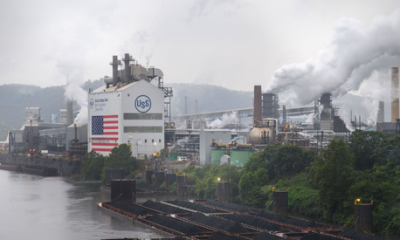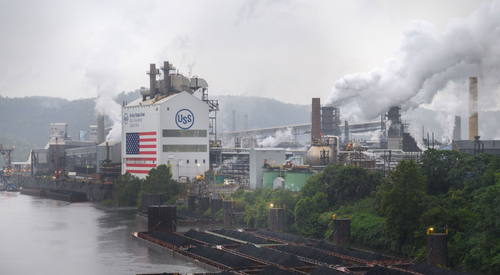Base Metals
Flexco washboxes stand the test of time
Flexco has installed washboxes throughout the Australian mining industry – and they are still going strong years later. Miners in the …
Australian…
Flexco has installed washboxes throughout the Australian mining industry – and they are still going strong years later.
Miners in the Pilbara region of Western Australia haul thousands of tonnes of ore every day.
A central point in this haulage cycle is a mine’s conveyor system, but issues tend to arise when an overworked machine meets the often hot and dusty climate of the Pilbara.
When a major iron ore mine experienced carryback issues (where material was being caught on the underside of its conveyor belt) back in 2021, it called in Flexco to develop a tailored washbox solution.
Two years later, the washbox is going still strong, as are the dozens of others that Flexco has installed throughout the country.
“A washbox is another way of adding an additional cleaning element into the conveyor belt,” Flexco Pilbara industry manager Jason Coe told Australian Mining.
“A washbox is an effective way to maximise belt hygiene and cleaning efficiency. They eliminate material build-up on rollers, which creates mis-tracking, belt damage and premature roller failure, as well as carryback that causes environmental issues.”
Just before he spoke with Australian Mining, Coe had been out visiting a site where Flexco installed two washboxes in July.
“We installed two identical washboxes, one on each conveyor,” Coe said. “Within 12 hours of the first washbox being installed, you could see the instant drop in carryback along the system.
“When I spoke to the mine superintendent, he said that the results had already amazed him and he is looking forward to seeing the second washbox running.”

When Flexco installed the washbox in the Pilbara site in 2021, it custom-engineered it to suit the mine’s needs.
Mounted to the return side of the belt, the washboxes were fitted with pressure rollers, spray bars, two secondary cleaners and a recovery system.
This process of customising washboxes to fit each mine’s needs is a standard practice for Flexco.
“We get our sites to fill out data sheets, which are then reviewed by our engineering team,” Coe said.
“That team determines the size and scope of the project.
“Then it comes down to us field specialists to identify which cleaners would work best for each project.”
It’s important that each washbox is designed to suit the application, because an incorrectly installed washbox can be detrimental to the life of the conveyor belt.
Coe explained that Flexco can use different cleaners to suit different needs.
“We have multiple different types of cleaners, spray bars and rollers. We can configure a combination of them to suit the application,” he said.
“There are so many different configurations possible that no two mines ever get the same washbox.”
Being installed in large Australian mine sites means the washboxes have to be able to withstand any condition. Luckily, this is something the Flexco team has taken into account.
“Our washboxes last because they’re made with high-grade stainless steel,” Coe said. “If a client has a $5 million conveyor belt that’s supposed to last 10 years, we need the washboxes to also live up to this. And not only are they meeting the belt life of a conveyor, but they are actually increasing the life, too.”
At the Pilbara site, installing the washbox meant Flexco was able to reduce the mine’s clean-up around the beltline, saving time and money.
The washbox added a further 12 months to the life of the overlander belt beyond its typical three-year life.
The washboxes are manufactured and configured in Australia, which means customers don’t have to wait long to have their material handling problems solved. Being on home soil also means that if there are any issues, the team can be out to a site in a matter of hours to check how things are running.
“The most important thing for us is that the washboxes are performing as they should for our customers,” Coe said. “So if that means heading back out to site to check on any problems, we’ll do it.
“We understand the frustration caused by a belt not running properly, and we want to be part of the solution.”
This feature appeared in the October 2023 issue of Australian Mining.

White House Prepares For “Serious Scrutiny” Of Nippon-US Steel Deal
White House Prepares For "Serious Scrutiny" Of Nippon-US Steel Deal
National Economic Adviser Lael Brainard published a statement Thursday…
How to Apply for FAFSA
Students and families will see a redesigned FAFSA this year. Here’s how to fill it out.
Dolly Varden consolidates Big Bulk copper-gold porphyry by acquiring southern-portion claims – Richard Mills
2023.12.22
Dolly Varden Silver’s (TSXV:DV, OTCQX:DOLLF) stock price shot up 16 cents for a gain of 20% Thursday, after announcing a consolidation of…










